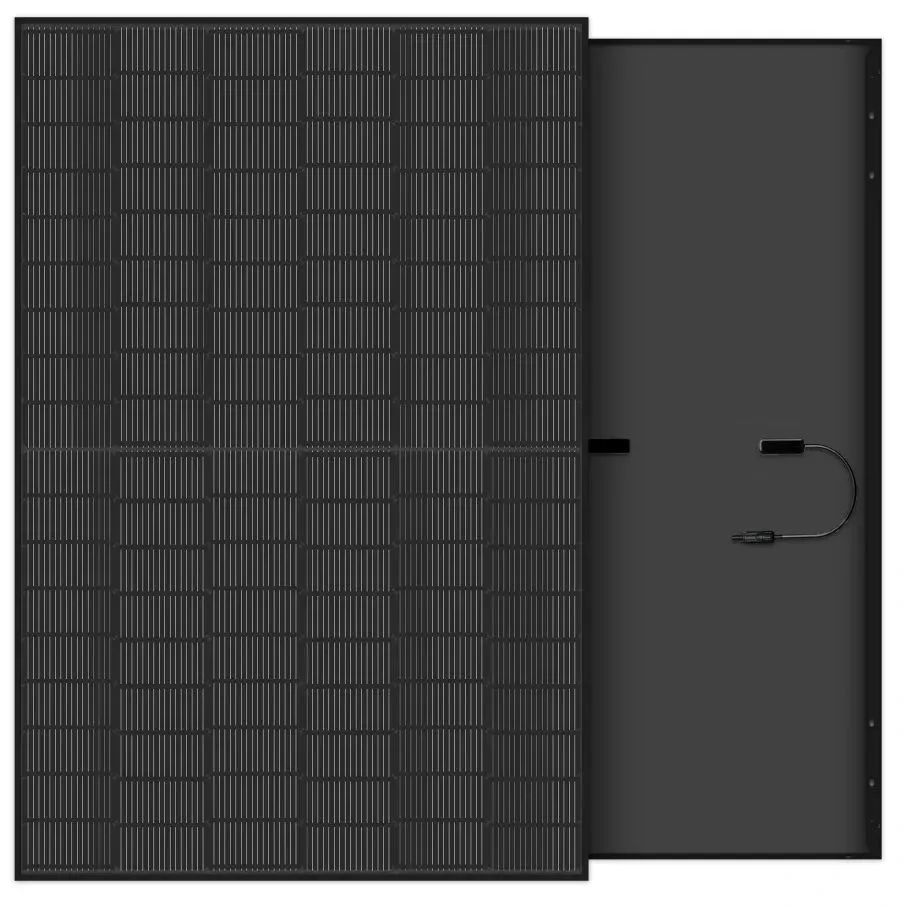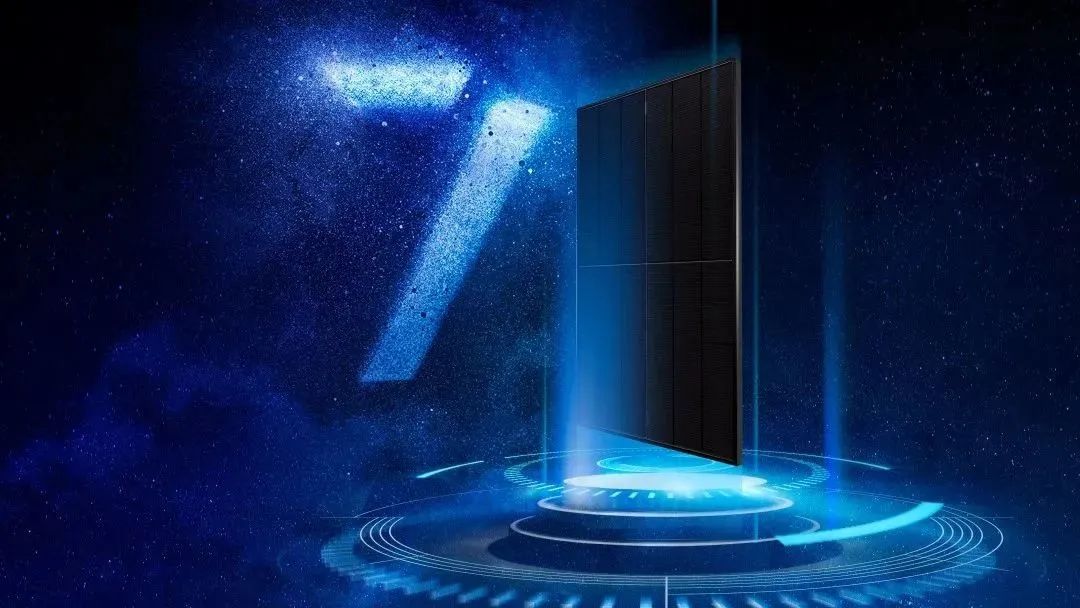Entering the era of PV parity, the tide of technological change has promoted the development of PV cell industry. From polycrystalline to monocrystalline, from P-type to N-type, the photovoltaic industry is facing a new round of scientific and technological revolution, and the cell technology gradually evolves towards high efficiency, low cost and high power generation efficiency.
In recent years, N-type cell technologies such as TOPCon, HJT and IBC have emerged one after another, and the PV market presents a coexistence pattern of P-type and N-type cells. Today, let's learn about the two categories of monocrystalline silicon cells: P-type and N-type solar cells.
Principle of PV Power Generation
Solar cells work on the photovoltaic effect. At absolute zero, the outer electrons of each atom are bound by covalent bonds and unable to move freely in pure silicon wafers. When the temperature rises or is illuminated, the valence electrons in the semiconductor covalent bond obtain certain energy from the outside world, and a few valence electrons break free from the bond and become free electrons, and a vacancy is left in the covalent bond, namely a hole. Electron-hole pairs formed inside a semiconductor, i.e. photo-generated carriers.
When the electron hole is close to the PN junction region, the electron holes will be separated into directional moving electron holes by the built-in electric field generated by the space charge region in the junction region. Where, holes move from the N region to the P region and electrons move from the P region to the N region, thereby realizing charge accumulation on both sides of the cell and generate a photo-generated electromotive force. When a load is attached to the leading electrodes on either side of the built field, the “photo generated current” flows through the load so as to obtain power output, and light energy is converted into electric energy. N type semiconductor is formed when phosphorus is diffused on the surface of silicon wafer at high temperature. If boron is diffused, P-type semiconductor is formed.

▲AK iCell 210mm efficient HJT cell
Differences between P and N-type cells
The biggest difference between the P-type and the N-type cell lies in the difference of the raw material silicon wafer and the cell preparation technology. In terms of raw materials, according to the different silicon wafers using different doping elements, it can be divided into N-type (using phosphorus-doped N-type silicon wafer as substrate) and P-type (taking boron-doped P-type silicon wafer as substrate) cell. In terms of preparation technology, the P-type cell mainly adopts the traditional aluminum back-field cell (AI-BSF) and the passive emitter and back-side cell (PERC) technology, and the preparation technology of the N-type cell mainly comprises tunnel oxide passivation contact cell (TOPCon), intrinsic thin film heterojunction cell (HJT), a full back electrode contact cell (IBC) and a passivated emitter back surface full diffusion cell (N-PERT), etc.

▲Akcome 182-54 type single-glass TOPCon module
Development of Solar Cell Technology
Before 2016, Aluminum Back Surface Field (BSF) cell technology was the first generation photovoltaic cell technology, with a market share of over 90% at one time. Since 2016, PERC cell began to grow in quantity and became the second-generation mainstream photovoltaic technology for the first time in 19 years, surpassing BSF technology, with a market share of up to 65%.
PERC cell is an emitter and back passivation cell technology. Passivation film is adapted to passivity the back side, so as to enhance the reflection of light on the inner back of silicon substrate and reduce the recombination rate of the back side, thereby improving the efficiency of the cell. At present, the technology of PERC cell is relatively mature and has high performance-price ratio, but the mass production efficiency has reached 23.2%, gradually approaching the theoretical limit efficiency of about 24.5% or so, and the efficiency rise space is narrow. Moreover, the phenomenon of light arrival attenuation of P-type cell due to rich boron and oxygen is not completely solved, so manufacturers will face the diminishing effect of marginal benefit rate of investment. The development space of P-type cell is very limited.
With the increasing demands of the market on the conversion efficiency of cells, photovoltaic manufacturers began to develop the next-generation cell technology with higher conversion efficiency limit-N-type high-efficiency cells. N-type cell, represented by TOPCon, HJT and IBC, has the advantages of high conversion efficiency, anti-attenuation, low temperature coefficient, high double-sided ratio, which are conducive to improving the photovoltaic power generation gain and reducing the power generation cost, and has broad development prospect, but is still in the early stage of industrialization due to high investment cost. According to the report of China Photovoltaic Industry Association, the mass production line newly put into operation in 2022 is still dominated by PERC cell production line. However, in the second half of this year, the production capacity of part of N-type cell will be released one after another, and the market share of P-type cell will be reduced to 87.5%, while the market share of N-type cell has gradually increased to 9.1%.
Aadvantages of the N-type cell
Compared with P-type monocrystalline cell, N-type monocrystalline cell has many advantages:
1) In terms of double-sided rate, the double-sided rate of PERC cell is 75%, TOPCon double-sided rate is 85%, and the double-sided rate of HJT is about 95%. The higher the double-face rate, the higher the gain of the module back generated energy, especially in the photovoltaic power station with higher surface reflectivity, the advantage is more obvious.
2) In terms of temperature coefficient, the temperature coefficient of Akcome PERC cell is-0.34%/°C, that of TOPCon cell is-0.30%/°C, and that of heterojunction cell is-0.24%/°C. The temperature coefficient of the N-type cell is lower than that of the P-type cell, which is less affected in high temperature environment and has better power generation performance., and the N-type cell is suitable for areas with better irradiation conditions.

▲AK iPower 7.0 Series HJT high-efficient Module
3) In terms of attenuation degree, the N-type silicon wafer doped with phosphorus has a very low content of boron, so the light attenuation (LID) caused by boron-oxygen pair can be basically negligible. The first year attenuation of PERC component is 2%-2.5%, and the annual attenuation is 0.45%-0.55%, the first year attenuation of TOPCon component is 1%, the annual attenuation is 0.40%, and the first year attenuation of HJT component is 1%, and the annual attenuation is 0.25%. Under the condition of the same combined output power, the full life cycle power generation of the N-type component is higher than that of the PERC component, and the premium space is larger.
4) In terms of power generation efficiency, the minority carrier life of the N-type cell is longer than that of the P-type cell, which can greatly improve the open-circuit voltage of the cell and bring higher cell conversion efficiency. At present, the average mass production efficiency of PERC cell is 23.2%, that of Topcon cell is about 24%-24.5% and that of HJT cell is about 25%. The high conversion efficiency can improve the power generation capacity per unit area and reduce the manufacturing cost of photovoltaic power generation.
5) In terms of weak-light effect, compared with the P-type cell, the N-type cell has better spectral response under the condition of weak light, has long effective working time, can generate electricity in a weak irradiation intensity time period such as morning and evening, rainy days and the like, and is better in economy.
According to the statistics of PV INFOLINK, an industry consulting agency, the production capacity of TOPCon is expected to exceed 400 GW in 2023, the capacity of HJT is expected to exceed 50 GW, and the shipment of N-type cells is expected to exceed 100 GW for the first time, which means that the photovoltaic technology revolution of N-type replacing P-type has arrived, and the manufacturing cost of N-type high-efficiency solar cells will continue to decrease with the maturity of technology and the promotion of localization. Market penetration will be further increased. Under the general trend of global energy transformation, as the earliest photovoltaic enterprise N-type technology layout, Akcome will gather innovation and forge ahead bravely, help energy transformation and renewable energy development, and lead the industry to start a new journey of N-type technology.
Godziny Odpowiedzi: 8:00-17:00 w dni robocze
HQ: 0571-89089399
Sales: +86-512 8255 7328
Mail: modulesales@akcome.com
Siedziba: pokój 901, budynek 1, nr 1818-2, Wenyi West Road, Yuhang Street, dystrykt Yuhang, miasto Hangzhou, prowincja Zhejiang